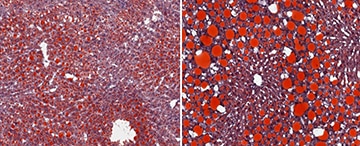Research Updates

NIH and FDA collaborate to develop technology to monitor research animals: A team of researchers from the NIH and the Food and Drug Administration have begun developing internet-connected "smart cages" to monitor mouse behavior and caging environment. The researchers, led by NIDDK's Dr. Alexxai Kravitz and Tom Pohida of NIH's Center for Information Technology, are developing devices to help them answer questions in multiple fields including studies of diabetes, obesity, and cancer. These devices are designed to be used in long-term, automated experiments, which can improve both the quality and reproducibility of research data. For their creative solution, the team was selected as one of five entrepreneurial projects for investment by the HHS Secretary's Ventures Fund, an award designed to support the HHS innovation agenda.
New CDC report: More than 100 million Americans have diabetes or prediabetes: More than 100 million U.S. adults are now living with diabetes or prediabetes, according to a new report (PDF, 1.35 MB) released today by the Centers for Disease Control and Prevention (CDC). The report finds that as of 2015, 30.3 million Americans—9.4 percent of the U.S. population—have diabetes. Another 84.1 million have prediabetes, a condition that if not treated often leads to type 2 diabetes within five years.
NIAID scientists identify cause, possible treatment for life-threatening gut condition: Investigators at NIH and international colleagues have discovered a genetic cause and potential treatment strategy for a rare immune disorder called CHAPLE disease. Children with the condition can experience severe gastrointestinal distress and deep vein blood clots. No effective treatments are available to ameliorate or prevent these life-threatening symptoms. In the study, researchers from the NIH's National Institute of Allergy and Infectious Diseases describe a newly understood mechanism for CHAPLE disease, or CD55 deficiency with hyperactivation of complement, angiopathic thrombosis, and protein-losing enteropathy. The study published June 29 in the New England Journal of Medicine.

NIH study sheds light on immune responses driving obesity-induced liver disease: New findings from mouse models reveal that the type of immune response that helps maintain healthy metabolism in fatty tissues, called type 2 immunity, also drives obesity-induced nonalcoholic fatty liver disease (NAFLD). The work, led by scientists at the NIH's National Institute of Allergy and Infectious Diseases, shows that the inflammatory environment in the fatty liver is more complex than previously thought. These insights may inform the development of new NAFLD treatments as well as immune-altering therapies for obesity and related health issues in people with NAFLD. The study published June 28 in Science Translational Medicine.
Reversing a common liver disease: As people age, old or damaged cells stop dividing to produce new cells. Over time, these "senescent" cells accumulate in the liver and other tissues. Previous studies have linked such cells to certain age-related diseases. A team of international researchers explored whether senescent cells play a role in nonalcoholic fatty liver disease. The researchers found that mice with a restricted diet usually didn't have fatty livers, whereas mice with an unrestricted diet did. Those fed an unrestricted diet had more molecular markers of senescence in liver cells as they aged. Diet restriction protected mice from these signs of senescence. The work was supported in part by NIH's National Institute on Aging. Results published June 13 in Nature Communications.
The structures of receptors involved in blood sugar control: Four international research teams reported the structures of the glucagon and GLP-1 receptors. One finding showed the structure of the full length human glucagon receptor, while another described the structure of a GLP-1 receptor. Two accompanying papers detailed the structure of the GLP-1 receptor when bound by small molecules that affect the receptor's activity. Two of the teams were supported in part by NIH, including NIDDK. The study published June 8 in Nature.
Pregnancy diet high in refined grains could increase child obesity risk by age 7, NIH study suggests: Children born to women with gestational diabetes whose diet included high proportions of refined grains may have a higher risk of obesity by age 7, compared to children born to women with gestational diabetes who ate low proportions of refined grains, according to results from an NIH study. These findings published June 7 in the American Journal of Clinical Nutrition, were part of the Diabetes & Women's Health Study, a research project led by NIH's Eunice Kennedy Shriver National Institute of Child Health and Human Development.
Drinking diet beverages during pregnancy linked to child obesity, NIH study suggests: Children born to women who had gestational diabetes and drank at least one artificially sweetened beverage per day during pregnancy were more likely to be overweight or obese at age 7, compared to children born to women who had gestational diabetes and drank water instead of artificially sweetened beverages, according to a study led by NIH researchers. Childhood obesity is known to increase the risk for certain health problems later in life, such as diabetes, heart disease, stroke and some cancers. The study published June 6 in the International Journal of Epidemiology.
NIH researchers find potential genetic cause of Cushing syndrome: A small study by NIH researchers suggests that mutations in the gene CABLES1 may lead to Cushing syndrome, a rare disorder in which the body overproduces the stress hormone cortisol. The study published June 1 in Endocrine-Related Cancer.
